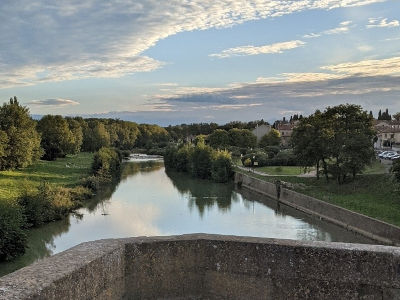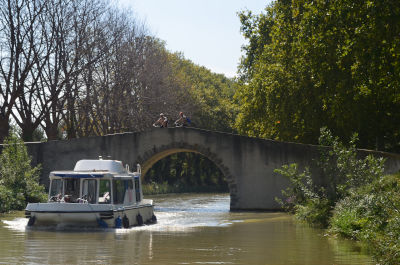
People the world over choose to go on holidays for many reasons, for example: to see new places and to appreciate the local culture; to unwind and relax; also perhaps to appreciate history and how people might have lived in the past by viewing first hand the buildings and structures of bygone times.
Carcassonne is a destination which provides the traveller wih an excellent opportunity to have just such a holiday. It is the capital of Aude département, Occitanie region in southwestern France. It is located 94 Km southeast of the large industrial city of Toulouse and it is also close to the historic towns of Narbonne and Beziers. The beautiful mediterranean sea is 74 Km distant from the city. The city is divided into two towns by the majestic Aude river: the Ville Basse (Lower Town) and the Cité. The Cité has the finest remains of medieval fortifications in Europe. As such, it is a UNESCO heritage site and one of France’s top tourist attractions with over three million visitors per year. The site it occupies today was controlled as early as the 5th century BC by the Iberians, then by Gallo-Romans. The inner rampart was built in 485. Over the years, many enhancements were undertaken including the building of the Basilica of St Nazaire with its stained glass windows from the middle ages and the creation of the outer ramparts complete with ornate turrets. The Cité lost its strategic significance in the 17th century and fell into decay. Restoration commenced in the 19th century with significant remedial work being undertaken up to the 1960s. Today it has nearly 1,000 residents living in properties along its small winding streets with many restaurants, a hotel, cafes and shops catering for the needs of today’s visitors. The entire site is illuminated at night presenting a beautiful image on the skyline. In the summer time there are many shows and festivals held at the Cité (https://www.festicket.com/festivals/festival-de-carcassonne/).
The city is divided into two towns by the majestic Aude river: the Ville Basse (Lower Town) and the Cité. The Cité has the finest remains of medieval fortifications in Europe. As such, it is a UNESCO heritage site and one of France’s top tourist attractions with over three million visitors per year. The site it occupies today was controlled as early as the 5th century BC by the Iberians, then by Gallo-Romans. The inner rampart was built in 485. Over the years, many enhancements were undertaken including the building of the Basilica of St Nazaire with its stained glass windows from the middle ages and the creation of the outer ramparts complete with ornate turrets. The Cité lost its strategic significance in the 17th century and fell into decay. Restoration commenced in the 19th century with significant remedial work being undertaken up to the 1960s. Today it has nearly 1,000 residents living in properties along its small winding streets with many restaurants, a hotel, cafes and shops catering for the needs of today’s visitors. The entire site is illuminated at night presenting a beautiful image on the skyline. In the summer time there are many shows and festivals held at the Cité (https://www.festicket.com/festivals/festival-de-carcassonne/).

Today, its slow-moving water provides the tourist with a rich source of beauty, relaxation and peace. These waters twist and turn through the countryside following the contours of the land and passing by acres of vineyards, fields and sunflowers and charming riverside settlements full of character and history.
Whether it is the  splendor of the beautiful Roman bridges built to a design devised thousands of years ago, the trees and plants which lie adjacent to the canal, or restaurants and cafes that are built on the banks of the canal, the cycling and walking tracks where horses previously pulled barges, the visitor will be exposed to a most magnificent vista. In these days of sustaining our precious environment, the Canal du Midi represents a great investment providing as it does a tranquil and restful environment for all who visit it. But whose legacy allows today’s visitors and tourists enjoy this tranquil environment? The canal’s beauty and splendor are due to Pierre-Paul Riquet (1604-1680) the engineer who conceived the idea in order to facilitate trade and the transport of goods particularly wine.
splendor of the beautiful Roman bridges built to a design devised thousands of years ago, the trees and plants which lie adjacent to the canal, or restaurants and cafes that are built on the banks of the canal, the cycling and walking tracks where horses previously pulled barges, the visitor will be exposed to a most magnificent vista. In these days of sustaining our precious environment, the Canal du Midi represents a great investment providing as it does a tranquil and restful environment for all who visit it. But whose legacy allows today’s visitors and tourists enjoy this tranquil environment? The canal’s beauty and splendor are due to Pierre-Paul Riquet (1604-1680) the engineer who conceived the idea in order to facilitate trade and the transport of goods particularly wine.
 Français
Français  English (UK)
English (UK) 






